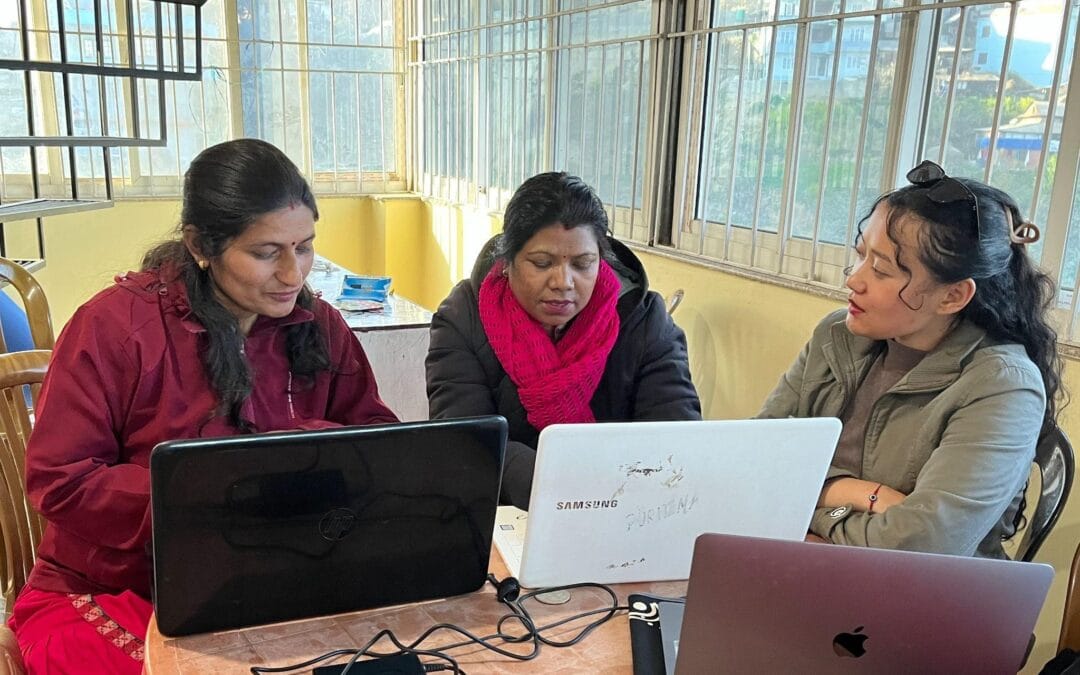Digital inclusion for women is critical in today’s world. The ability to use a computer is no longer regarded as a privilege, but rather a requirement—particularly for rural women’s empowerment. Access to necessary tools, internet usage, and tech education for women can dramatically improve educational opportunities. Yet, this is still not the case for a huge population of women residing in rural areas, such as in Nepal, where these resources remain scarce.
Ensuring that rural women are not left behind in this global digital era calls for intentional efforts to include women in computer literacy programs. Volunteering for the cause of electronic inclusion, especially for women, aligns with the goals of Volunteers Initiative Nepal (VIN) to promote fair development and serve underprivileged communities.
Barriers Faced By Women in Rural Areas
When trying to access modern technology, women in rural communities often encounter multiple obstacles:
- Poor Infrastructure: Electricity—a major requirement for digital inclusiveness—and a reliable internet connection are often unavailable or inconsistent in rural regions.
- Gender and Cultural Constraints: In highly patriarchal societies, education and resources are frequently allocated toward men, making it challenging for women to learn and develop digital skills for economic growth.
- Financial Inaccessibility: In many rural areas where poverty is prevalent, technology is viewed as a luxury. This creates a significant barrier to IT training for rural communities.
- Lack of Basic Education: Many rural women, especially in developing nations, may be illiterate. This lack of foundational literacy makes computer usage even more difficult.
- Limited Awareness of Benefits: Several women remain unaware of the educational and economic advantages that digital literacy can offer. As a result, they miss opportunities for digital entrepreneurship and related endeavors that could boost their household income and personal development.
Importance of Computer Skills
Investing in teaching basic computer skills to women in rural areas extends beyond simply learning how to operate a digital device. It has the potential to transform their lives and uplift entire communities.
- Access to Services and Information: With even basic computer skills, rural women can gain access to crucial information—covering health services, agricultural advice, and legal rights. Virtual forums connect them to various farming practices, nutrition tips, and laws that impact their well-being.
- Economic Empowerment: Digital inclusion allows women to explore freelance work, manage digital transactions, engage in online markets, and operate virtual businesses. For instance, many women artisans in Nepal have expanded their sales beyond national borders using online platforms.
- Educational Advancement: Tech education for women opens doors to online courses, tutorials, and certification programs. This is particularly beneficial for those who had to leave school due to early marriage or familial responsibilities, offering them a second chance to learn and grow.
- Enhanced Community Leadership: Women with digital literacy often assume leadership roles in their communities, using social media and communication tools to advocate for community interests, engage in local politics, and raise awareness about social issues.
- Bridging the Gender Gap: Teaching computer skills to women fosters inclusive development, propelling communities closer to gender equality. Empowered women, in turn, empower future generations by breaking stereotypes and inspiring others.
The Role of Organizations Such as VIN
Organizations like Volunteers Initiative Nepal (VIN) play a pivotal role in advancing digital inclusion strategies and implementing practical solutions. Their holistic approach to community development ensures that education and empowerment are integral to social transformation goals.
- Establishing Community Computer Literacy Centers: Setting up computer labs in rural areas provides women with safe, accessible spaces for learning.
- Tailoring Training Programs: Flexible training sessions—designed around local literacy levels and daily schedules—are more effective. Offering instruction in multiple local languages also broadens participation.
- Mobilizing Community Leaders: Involving respected community figures, particularly female role models, can help overcome cultural barriers and increase turnout.
- Leveraging Mobile Technology: Since mobile phones are widespread in rural regions, phone-friendly training modules and apps are often more practical and impactful than traditional methods.
Conclusion
Achieving social and economic equality requires ensuring that rural women have the necessary tools for digital inclusion. Indeed, digital entrepreneurship can serve as a means of social justice, offering women new pathways to break cycles of poverty, inequality, and disempowerment.
As an intern with Volunteers Initiative Nepal, it’s evident that on-ground advocacy efforts and computer literacy programs can make a tangible difference for women in remote areas. Beyond teaching a skill, it’s about nurturing the idea that a woman, determined to be self-reliant, can be equipped with the essential resources to thrive.
Ensuring rural women’s empowerment in the digital age is not just a technological challenge, but a socio-political one—demanding an inclusive revolution that acknowledges every woman’s right to learn, grow, and lead.
Written by: Jemini Shrestha ( YWC ESC – Women Empowerment )

